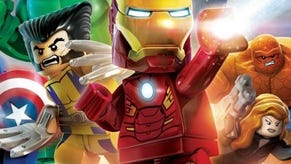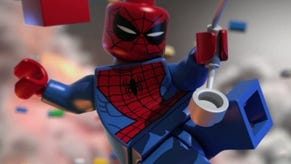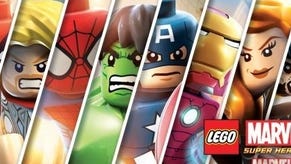Next-Gen Face-Off: Lego Marvel Super Heroes
Blockbuster.
Traveller's Tales' loveable series of Lego games is known for its imagination, humour and attention to detail - and, in the case of the early titles, their solid 60fps refresh. However, the transition to the first round of HD consoles didn't go smoothly. Despite the relatively simple visuals, the jump from SD to 720p found the engine struggling to maintain a steady frame-rate without heavy tearing. Eventually, Lego Star Wars 3: The Clone Wars saw TT abandon 60Hz entirely in favour of overhauling the visuals of the game and expanding the scope of the action to freshen up the series. With the arrival of next-gen console, though, there's all those extra frames to play for again. So just how well has the Lego series transitioned onto Xbox One and PlayStation 4? We decided to take a look at Lego Marvel Super Heroes in order to find out.
In truth, given the large scale multi-platform conversion work spanning no less than nine different formats - including two brand new consoles - combined with the tight pre-Christmas deadline for release, a return to the 60fps glory days of the PS2 was perhaps too much to expect, and once again, Traveller's Tales sticks to a 30fps update instead of aiming to reach the same lofty standard as the earlier games in the series.
However, the decision to target a more modest frame-rate allows the developers to ramp up the level of visual effects and still maintain a smooth update. To kick things off, the PS4 and Xbox One versions of Lego Marvel render natively in 1080p, resulting in a crisp presentation that is a massive improvement above the old PS3 and 360 Lego games. Similar forms of post-process anti-aliasing are used on both consoles, with coverage varying from scene to scene. As usual with post-AA techniques, sub-pixel shimmer is present across more finely detailed structures and objects far away from the camera.
Aside from the obvious boost in resolution, Traveller's Tales has clearly focused on creating a more cinematic and exciting visual reproduction of the Lego universe that sees a range of enhanced effects work and lighting giving a more realistic look to those colourful Lego bricks and structures. Liberal use of object blur and a strong depth-of-field effect that highlights characters and parts of the environment close to the camera adds a more dramatic tone to the action, while the use of more advanced surface shaders does a great job of adding an almost Pixar-like CG sheen to proceedings. Compared to last-gen Lego titles, environments are more detailed, using higher-resolution textures, and draw distances are visibly longer.
From a graphical perspective, the experience is replicated to a similarly high standard across both next-gen systems and PC, although there are one or two unusual differences that stand out. In the latter part of the first stage, some lower-resolution artwork is present on the PS4, with sand textures across the ground appearing as a blurry mess. The problem is also present on the PC - though to a much lesser degree - leasing us to believe that this phenomenon is most likely down to a rendering bug that slipped past QA. Curiously, screen-space ambient occlusion (SSAO) also appears absent from the PC version, robbing some scenes of added depth around the characters and parts of the environment, and we also see clear examples of banding across specular highlights on shiny surfaces.
Beyond that, though, we are looking at a limited range of adjustable graphics settings consisting of resolution, refresh rate, toggle v-sync, and a brightness slider. Those hoping to tinker further will have to venture into their graphics card's control panel or perhaps indulge in a spot of config file editing. Anti-aliasing options are absent, the game using similar post-process edge-smoothing to the console versions, perhaps suggesting that a deferred lighting scheme is in operation - technology that's notoriously incompatible with traditional multi-sampling AA.


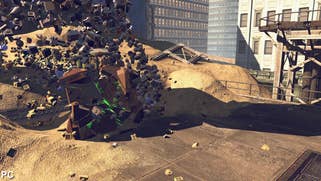

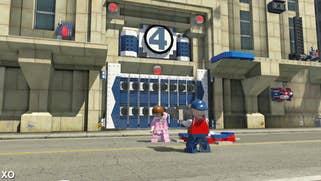
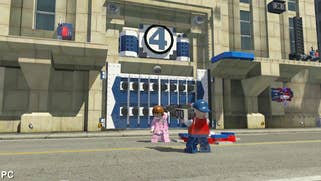


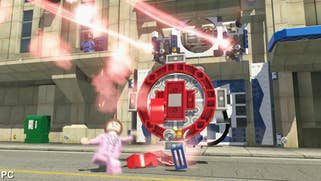
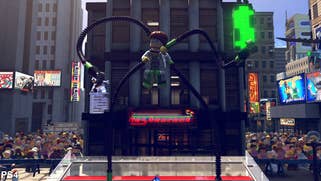
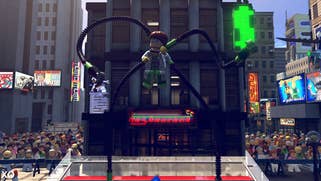
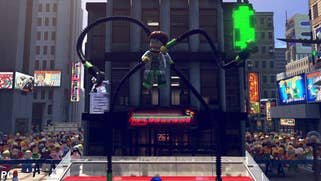
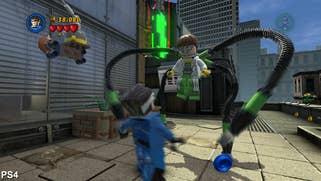

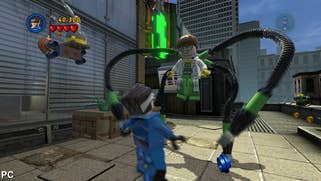
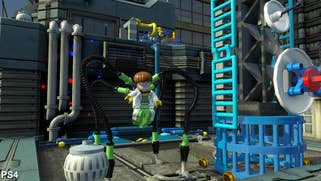

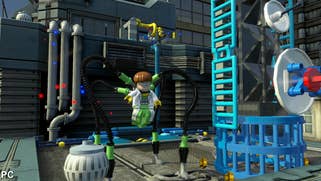
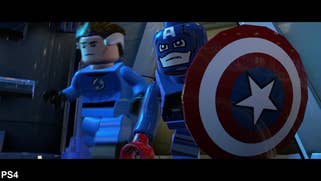
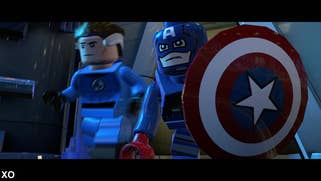
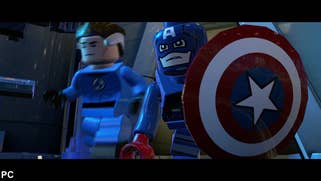
In terms of performance, the decision to target 30fps has its benefits over the current-generation Lego titles, with the added power on tap in the Xbox One and PS4 used maintain a much steadier frame-rate that rarely deviates from the target refresh. The stable 30fps update present on both next-gen consoles is welcome overall: controls feel more responsive than before, and the annoying juddering caused by dropped frames and screen tearing is basically a non-issue. Those hoping for a solid lock may be disappointed though: we occasionally see a few individual torn frames on the PS4, along with the odd drop down to 20fps (with tearing) on the Xbox One during some of the cut-scenes.
The good news is that none of this affects the actual gameplay, which appears consistently smooth for most of the time. The liberal use of object blur also appears to make the action run smoother than it actually does due to the way frames are blended together in motion, which adds a distinct cinematic feel to the game that suits the source material. So while we never get the same super-slick 60fps presentation as in earlier games, the improvement over the latter-day last-gen titles is palpable.
As good as it is, playing on PC allows us to regain the slick 60Hz presentation that was the hallmark of the series not so long ago, and this has some worthwhile benefits for the overall experience. The controls feel noticeably crisper than on console, and the excellent physics-based Lego debris appears better animated due to the increased smoothness. The extra temporal resolution also allows the lovely surface shaders and effects work to stand out more than before: more detail is resolved on-screen in fast-moving scenes, despite the heavy use of object blur, and without compromising the cinematic presentation.
"For a series with its roots in slick 60Hz gameplay, it is a touch disappointing that both next-gen consoles Lego releases are capped at 30 frames per second. Only PC offers the ability to run at double the frame-rate."
Overall, it's a strong first showing for the Lego series on next-gen consoles, with the vastly upgraded visuals and general effects work bringing these beloved plastic blocks and figures to life in more striking ways. The animation is first-rate, too, perfectly mimicking beloved Marvel characters as they fumble through action-packed encounters in the cartoon CG Lego style.
For those looking to bring back the PS2 glory days when Lego games ran at 60fps mostly without a hitch, the PC version delivers the full-fat experience with ease, complete with noticeably swifter controller response and a level of fluidity unmatched on the PS4 and Xbox One releases. The absence of SSAO and lack of in-game customisable anti-aliasing options is disappointing, but we feel the trade-off to obtain a much more silky-smooth presentation is worth it - it simply makes the whole experience feel more polished and enjoyable.
On the face of it, then, fans of the series should be very pleased with Lego Marvel Super Heroes. While the somewhat repetitive nature of the gameplay and overly familiar mechanics are perhaps in need of an overhaul, the series still manages to pack in a few welcome new ideas, and continues to surprise us with a sublime attention to detail combined with the sheer wealth of content on offer.





